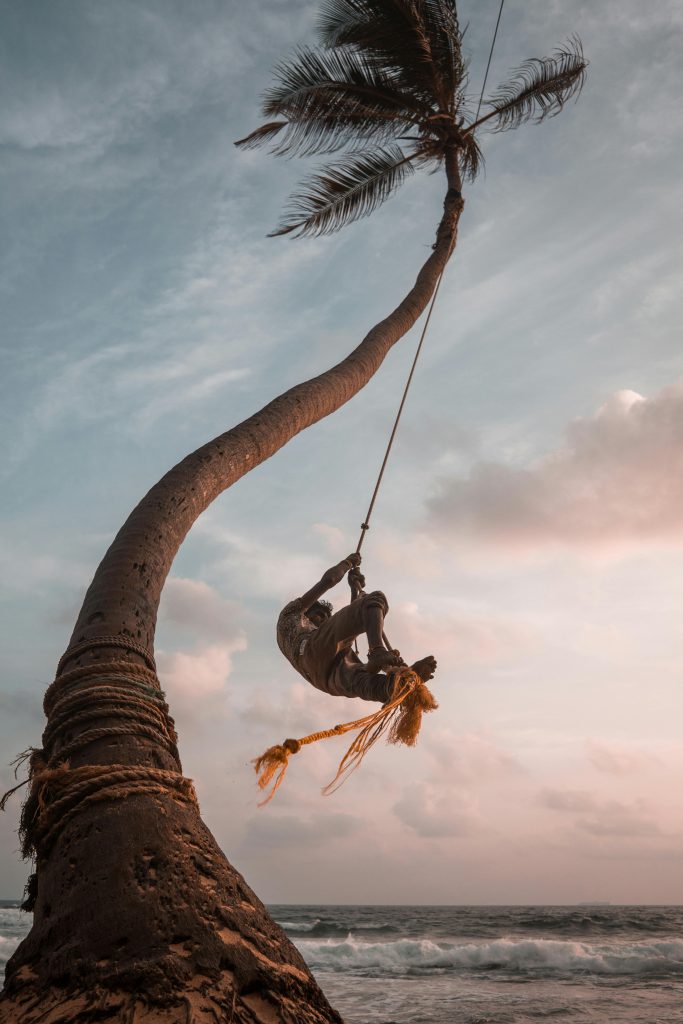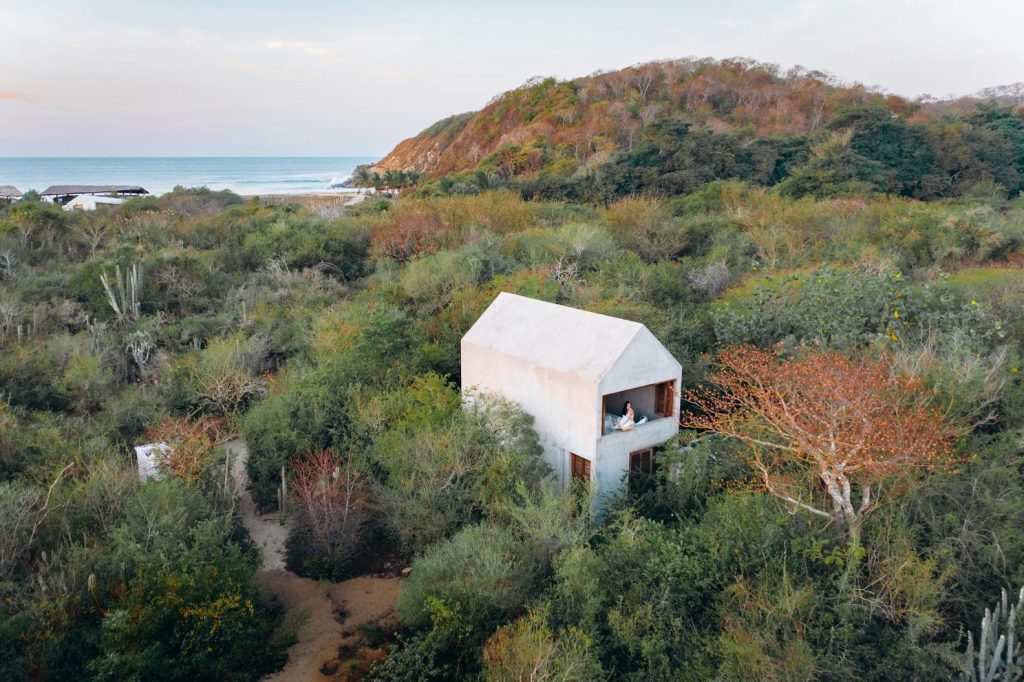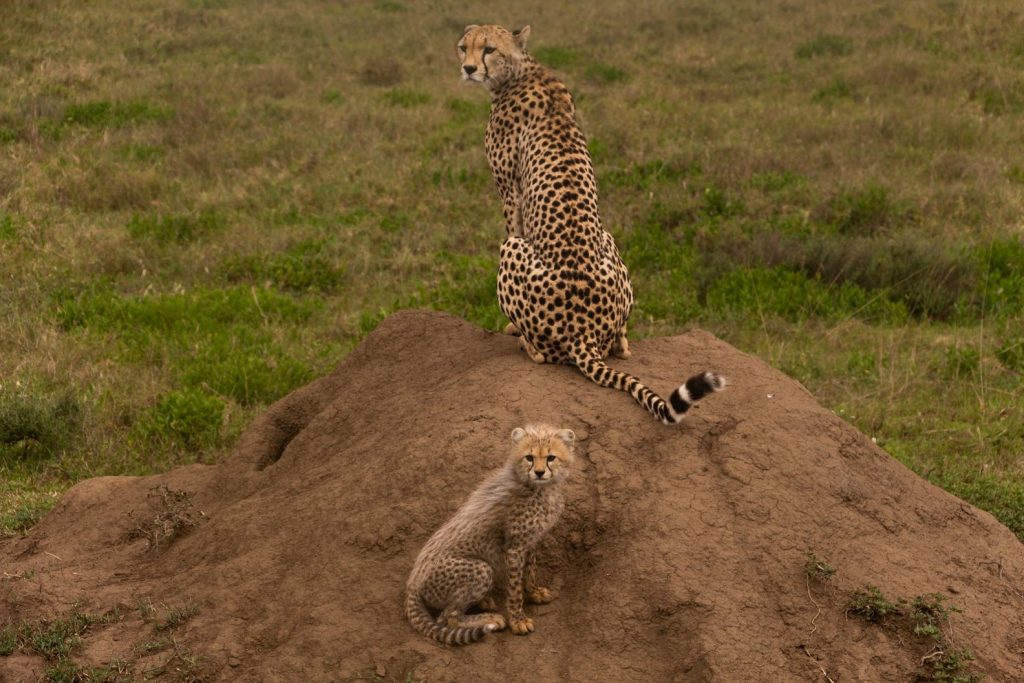
Picture yourself strolling along pristine beaches, exploring ancient temples, and encountering diverse wildlife in the lush jungles of Sri Lanka. This tropical paradise beckons travelers with its rich culture and natural beauty. But with great adventure comes great responsibility.
Are you ready to embark on a journey that not only fulfills your wanderlust but also positively impacts the places and people you visit? Responsible travel in Sri Lanka is more than just a trend—it’s a necessity. From respecting local customs to supporting sustainable tourism practices, your choices can make a world of difference.
In this guide, we’ll explore seven essential aspects of responsible travel in Sri Lanka. You’ll learn how to navigate cultural sensitivities, support local communities, minimize your environmental footprint, engage in ethical wildlife tourism, preserve heritage sites, make sustainable food choices, and participate in responsible adventure activities. Let’s dive in and discover how you can become a conscious explorer in this enchanting island nation!
Understanding Sri Lanka’s Cultural Sensitivities
As we embark on our journey through Sri Lanka, it’s crucial to understand and respect the country’s rich cultural heritage. By being mindful of local customs and traditions, we can ensure a more meaningful and harmonious travel experience.
Respect for Religious Sites
Sri Lanka is home to numerous sacred sites, including Buddhist temples, Hindu kovils, and Muslim mosques. When visiting these places:
- Remove shoes and hats before entering
- Dress modestly, covering shoulders and knees
- Avoid pointing feet towards religious statues or images
- Speak quietly and refrain from public displays of affection
Learning Basic Sinhala Phrases
Making an effort to learn a few local phrases can go a long way in building connections with the Sri Lankan people. Here are some essential Sinhala phrases to get you started:
| English | Sinhala | Pronunciation |
| Hello | ආයුබෝවන් | Ayubowan |
| Thank you | ස්තූතියි | Sthuthi |
| Please | කරුණාකරලා | Karunakarala |
| Yes | ඔව් | Ow |
| No | නෑ | Nae |
Photography Etiquette
While Sri Lanka offers countless photogenic moments, it’s important to be respectful when taking pictures:
- Always ask permission before photographing people, especially in rural areas
- Avoid using flash photography in temples or near religious artifacts
- Be mindful of cultural sensitivities when photographing religious ceremonies
- Respect “no photography” signs, particularly at ancient sites and museums
Appropriate Dress Code
Dressing appropriately shows respect for local customs and helps avoid unwanted attention:
- Cover shoulders and knees when visiting religious sites
- Wear modest swimwear at public beaches and pools
- Remove hats and sunglasses when entering temples
- Avoid wearing revealing clothing in conservative areas
By adhering to these cultural sensitivities, we not only show respect for Sri Lankan traditions but also pave the way for more authentic and enriching interactions with locals. As we move forward, we’ll explore how supporting local communities can further enhance our responsible travel experience in Sri Lanka.
Supporting Local Communities
Now that we’ve explored Sri Lanka’s cultural sensitivities, let’s delve into how we can support local communities during our travels. By making conscious choices, we can ensure that our visit benefits the people who call this beautiful island home.
Hiring Local Guides
One of the most impactful ways to support local communities is by hiring local guides. These knowledgeable individuals not only provide invaluable insights into Sri Lankan culture and history but also benefit directly from tourism. Local guides often have a deep connection to their surroundings, offering authentic experiences that you might miss otherwise.
Consider the following benefits of hiring local guides:
- Authentic cultural experiences
- Support for local families
- Insider knowledge of hidden gems
- Contribution to the local economy
Participating in Community-Based Tourism
Community-based tourism initiatives offer a win-win situation for both travelers and local communities. These programs typically involve:
- Homestays with local families
- Village tours
- Traditional cooking classes
- Craft workshops
By participating in such activities, you not only gain unique experiences but also contribute directly to community development projects.
Buying from Small Businesses
Supporting small businesses is crucial for the local economy. When shopping for souvenirs or dining out, opt for local establishments rather than international chains. Here’s a comparison of the impact:
| Buying from Local Businesses | Buying from International Chains |
| Supports local families | Profits often leave the country |
| Preserves traditional crafts | May lead to cultural homogenization |
| Creates unique experiences | Offers standardized experiences |
| Boosts local economy | Limited local economic impact |
Choosing Locally-Owned Accommodations
Opting for locally-owned accommodations, such as guesthouses or boutique hotels, ensures that your tourism dollars directly benefit the community. These establishments often provide a more authentic experience and personalized service.
When selecting accommodations, consider:
- Family-run guesthouses
- Eco-lodges operated by local communities
- Small, locally-owned boutique hotels
- Homestays arranged through community tourism initiatives
By choosing these options, you’re not only supporting local families but also gaining unique insights into Sri Lankan hospitality and way of life.
Supporting local communities through these thoughtful choices enhances your travel experience while contributing positively to Sri Lanka’s sustainable development. As we explore ways to minimize our environmental impact in the next section, keep in mind that responsible tourism is about balancing cultural, economic, and environmental considerations.

Minimizing Environmental Impact
As we explore the beauty of Sri Lanka, it’s crucial to consider our impact on the environment. By adopting eco-friendly practices, we can help preserve the island’s natural wonders for future generations.
A. Participating in beach clean-ups
Sri Lanka’s coastline is a treasure trove of stunning beaches, but they face the threat of pollution. Joining local beach clean-up initiatives is an excellent way to contribute positively:
- Look for organized clean-up events through local environmental groups
- Bring your own reusable gloves and bags to collect trash
- Educate fellow travelers about the importance of keeping beaches clean
B. Choosing eco-friendly transportation options
Opting for sustainable transportation can significantly reduce your carbon footprint:
| Transportation Option | Environmental Impact | Advantages |
| Public buses | Low | Affordable, cultural experience |
| Trains | Low | Scenic routes, comfortable |
| Bicycles | Very low | Healthy, flexible |
| Electric tuk-tuks | Low | Convenient for short distances |
C. Respecting wildlife and natural habitats
Sri Lanka’s diverse ecosystems are home to unique flora and fauna. To protect these habitats:
- Stay on designated trails when hiking
- Avoid touching or feeding wild animals
- Keep a safe distance when observing wildlife
- Never purchase products made from endangered species
D. Conserving water and energy
Water and energy conservation is crucial in Sri Lanka, especially during dry seasons:
- Take short showers instead of baths
- Turn off lights and air conditioning when leaving your accommodation
- Reuse towels and linens when possible
- Choose accommodations with sustainable practices
E. Reducing plastic waste
Plastic pollution is a significant issue in Sri Lanka. Here’s how you can minimize your plastic footprint:
- Carry a reusable water bottle and refill it at designated stations
- Say no to plastic straws and disposable cutlery
- Bring your own reusable shopping bags
- Choose products with minimal packaging
By implementing these eco-friendly practices, you’ll not only minimize your environmental impact but also set a positive example for other travelers and locals alike. As we move forward, let’s explore how we can engage in ethical wildlife tourism to further support Sri Lanka’s natural ecosystem.

Ethical Wildlife Tourism
As we explore responsible travel in Sri Lanka, it’s crucial to address ethical wildlife tourism. Sri Lanka’s diverse ecosystems and rich biodiversity offer incredible opportunities for wildlife encounters, but it’s essential to approach these experiences with care and respect for the animals and their habitats.
Responsible Whale Watching
Sri Lanka is renowned for its whale watching opportunities, particularly off the coast of Mirissa. To ensure these majestic creatures are protected:
- Choose operators who follow responsible whale watching guidelines
- Maintain a safe distance from the whales (at least 100 meters)
- Opt for trips that limit the number of boats and duration of encounters
Choosing Accredited Safari Operators
When embarking on a safari adventure in national parks like Yala or Udawalawe:
- Research and select operators with proper accreditation
- Look for guides who prioritize animal welfare over tourist satisfaction
- Respect park rules and guidelines during your visit
| Criteria | Responsible Operator | Irresponsible Operator |
| Vehicle use | Maintains distance, uses designated roads | Pursues animals aggressively, goes off-road |
| Group size | Limits number of vehicles and tourists | Overcrowds viewing areas |
| Education | Provides informative commentary | Focuses solely on photo opportunities |
| Conservation | Contributes to local conservation efforts | No involvement in conservation |
Supporting Wildlife Conservation Efforts
Engage in activities that directly contribute to wildlife preservation:
- Visit and donate to wildlife rehabilitation centers
- Participate in guided nature walks led by conservation experts
- Support local NGOs working on wildlife protection projects
Avoiding Unethical Elephant Attractions
Elephants hold a special place in Sri Lankan culture, but many tourist attractions exploit these gentle giants. To be an ethical elephant tourist:
- Avoid riding elephants or attending shows where they perform unnatural behaviors
- Choose sanctuaries that prioritize elephant welfare over tourist entertainment
- Support organizations that work to protect wild elephant populations
By making informed choices about wildlife tourism, you not only enhance your own experience but also contribute to the long-term conservation of Sri Lanka’s incredible fauna. As we move forward, we’ll explore how to preserve Sri Lanka’s rich cultural heritage while traveling responsibly.
Preserving Sri Lanka’s Heritage
Now that we’ve explored responsible wildlife tourism, let’s delve into the crucial aspect of preserving Sri Lanka’s rich cultural heritage. As visitors, we have a unique opportunity to contribute to the conservation of this island nation’s historical and cultural treasures.
Participating in Cultural Exchange Programs
Cultural exchange programs offer an immersive way to experience Sri Lankan traditions while fostering mutual understanding. These programs typically include:
- Homestays with local families
- Traditional cooking classes
- Language exchange sessions
- Participation in local festivals and ceremonies
By engaging in these activities, travelers not only gain authentic experiences but also contribute directly to local communities, helping to preserve their cultural practices.
Learning about Sri Lankan History and Culture
To truly appreciate and respect Sri Lanka’s heritage, it’s essential to educate yourself about its history and culture. Consider the following approaches:
- Visit museums and historical sites
- Read books on Sri Lankan history before your trip
- Engage with local guides for in-depth insights
- Attend cultural performances and exhibitions
| Resource Type | Examples |
| Museums | National Museum of Colombo, Tea Museum in Kandy |
| Historical Sites | Sigiriya Rock Fortress, Anuradhapura Ancient City |
| Books | “A History of Sri Lanka” by K.M. de Silva |
| Cultural Performances | Kandyan dance shows, traditional puppet performances |
Supporting Traditional Crafts and Artisans
Sri Lanka boasts a rich tradition of craftsmanship, from intricate lacework to vibrant masks. By supporting local artisans, you help preserve these time-honored skills:
- Purchase directly from artisans or fair-trade shops
- Participate in craft workshops to learn traditional techniques
- Commission custom pieces as meaningful souvenirs
- Share your experiences on social media to promote these crafts
Following UNESCO World Heritage Site Guidelines
Sri Lanka is home to eight UNESCO World Heritage Sites, each with its own set of guidelines for responsible visitation. To ensure these sites are preserved for future generations:
- Adhere to designated pathways and viewing areas
- Refrain from touching or removing any artifacts
- Follow photography restrictions where applicable
- Respect dress codes, especially at religious sites
- Hire certified guides who can provide accurate information
By following these guidelines, you contribute to the long-term preservation of Sri Lanka’s most significant historical and natural sites.
As we move forward, we’ll explore how your food choices can further contribute to sustainable tourism in Sri Lanka.
Sustainable Food Choices
As we explore responsible travel in Sri Lanka, let’s turn our attention to the important aspect of sustainable food choices. By making conscious decisions about what we eat, we can significantly contribute to the local economy and minimize our environmental impact.
Learning about traditional Sri Lankan cooking methods
Sri Lankan cuisine is not only delicious but also deeply rooted in sustainable practices. Traditional cooking methods often emphasize the use of local, seasonal ingredients and minimal waste. Here’s a quick overview of some traditional cooking techniques:
- Clay pot cooking: Enhances flavors while using less oil and retaining nutrients
- Coconut milk extraction: Uses every part of the coconut, reducing waste
- Spice grinding: Freshly ground spices reduce the need for preservatives
Supporting farm-to-table restaurants
Farm-to-table restaurants are gaining popularity in Sri Lanka, offering a sustainable dining experience. These establishments source their ingredients directly from local farmers, reducing transportation costs and supporting the local economy. Here’s why you should consider dining at farm-to-table restaurants:
| Benefits | Impact |
| Fresher ingredients | Better taste and nutritional value |
| Reduced carbon footprint | Less transportation and packaging |
| Support for local farmers | Strengthens the local economy |
| Seasonal menus | Encourages sustainable agriculture |
Avoiding over-exploited seafood
Sri Lanka’s waters are home to a diverse array of marine life, but some species are at risk due to overfishing. As a responsible traveler, it’s crucial to be aware of which seafood options are sustainable. Here are some tips:
- Research local sustainable seafood guides before your trip
- Ask restaurant staff about the source of their seafood
- Choose locally caught, abundant species over imported or endangered ones
- Consider vegetarian options to reduce overall seafood consumption
Trying local cuisine
Embracing local cuisine is not only a delightful culinary adventure but also a sustainable choice. By opting for traditional Sri Lankan dishes, you’re supporting local farmers, reducing food miles, and preserving culinary heritage. Some must-try local dishes include:
- Rice and curry: A staple meal featuring rice served with various vegetable and meat curries
- Hoppers: Bowl-shaped pancakes made from fermented rice batter and coconut milk
- Kottu roti: A popular street food made from chopped roti, vegetables, and spices
- Pol sambol: A spicy coconut relish that accompanies many Sri Lankan meals
By making sustainable food choices during your travels in Sri Lanka, you’re not only treating your taste buds but also contributing to the preservation of local culture and environment. Next, we’ll explore how to engage in responsible adventure tourism while enjoying the island’s natural wonders.
Responsible adventure tourism in Sri Lanka offers thrill-seekers the perfect blend of excitement and sustainability. From trekking through lush rainforests and exploring hidden waterfalls to surfing along pristine beaches, Sri Lanka is an adventurer’s paradise. However, the true magic lies in exploring these wonders responsibly—minimizing environmental impact, respecting local cultures, and supporting eco-friendly initiatives. By choosing responsible tourism, travelers can ensure that their adventures help preserve the island’s stunning landscapes and diverse wildlife for future generations. Sri Lanka’s commitment to sustainability ensures that each visitor not only experiences unforgettable journeys but also contributes to the protection of the environment and the well-being of local communities. Whether it’s whale watching in Mirissa or hiking the Knuckles Mountain Range, responsible adventure tourism allows travelers to connect deeply with nature while making a positive difference. For those seeking exhilarating experiences with a purpose, Sri Lanka is the ideal destination for conscious adventurers.
